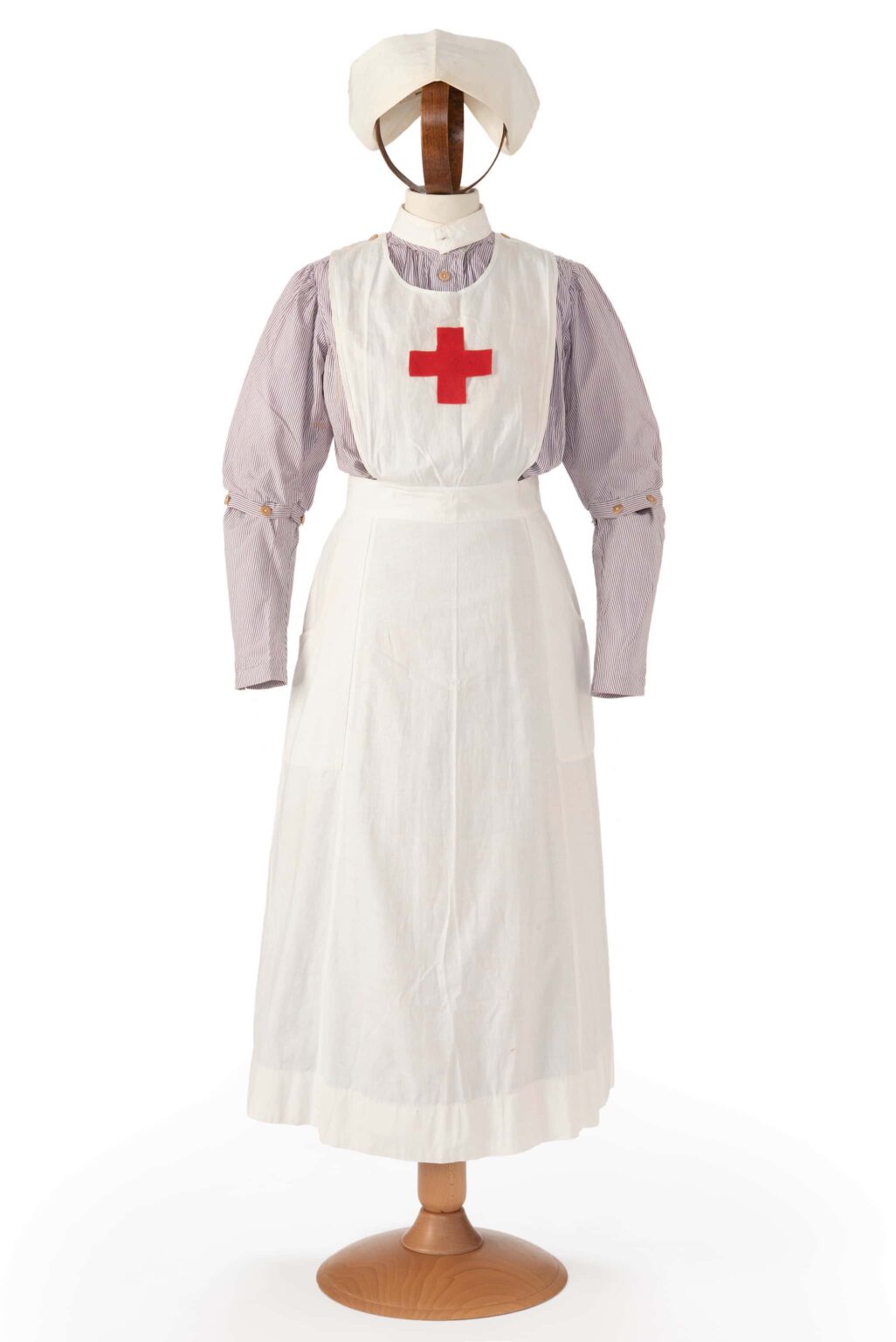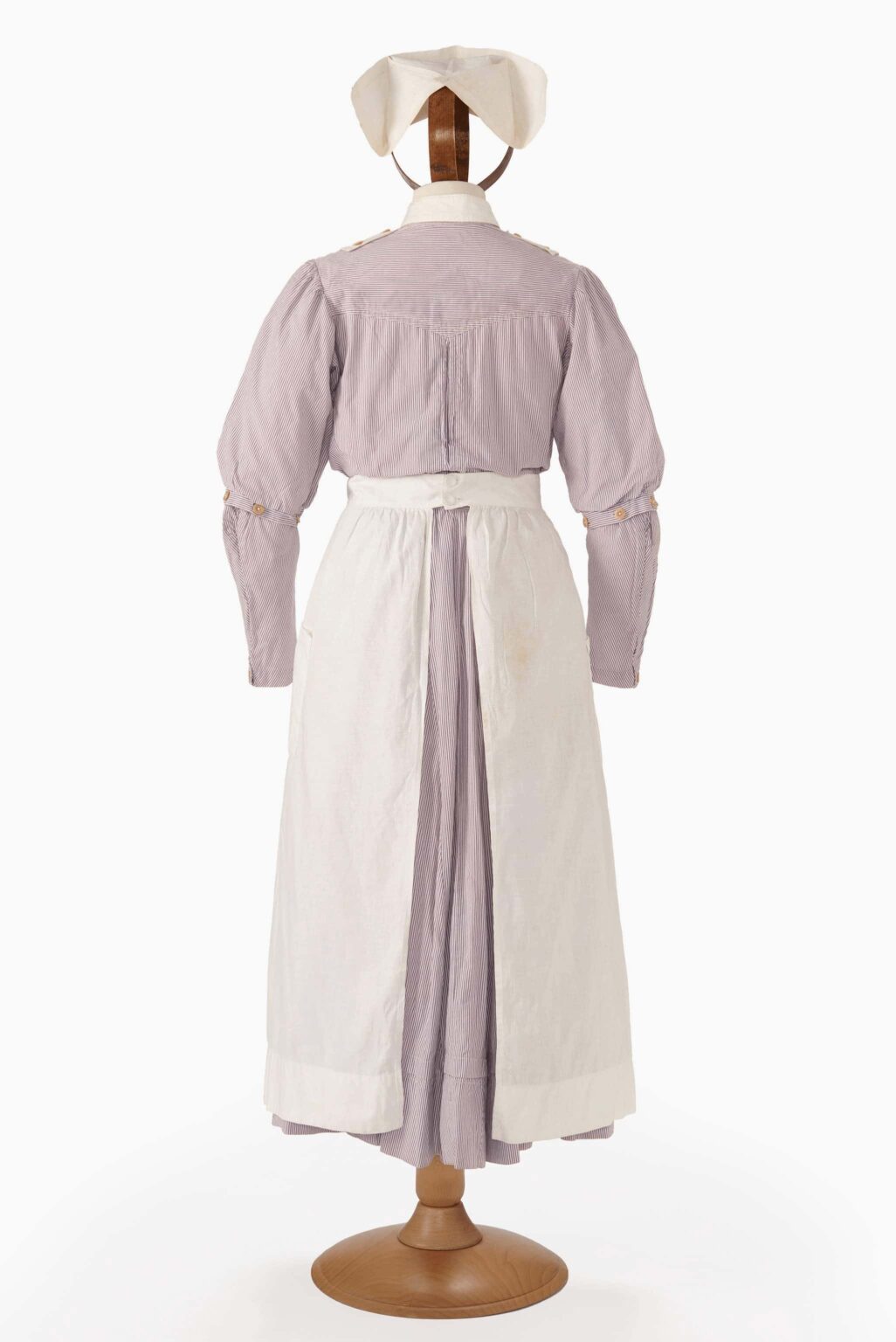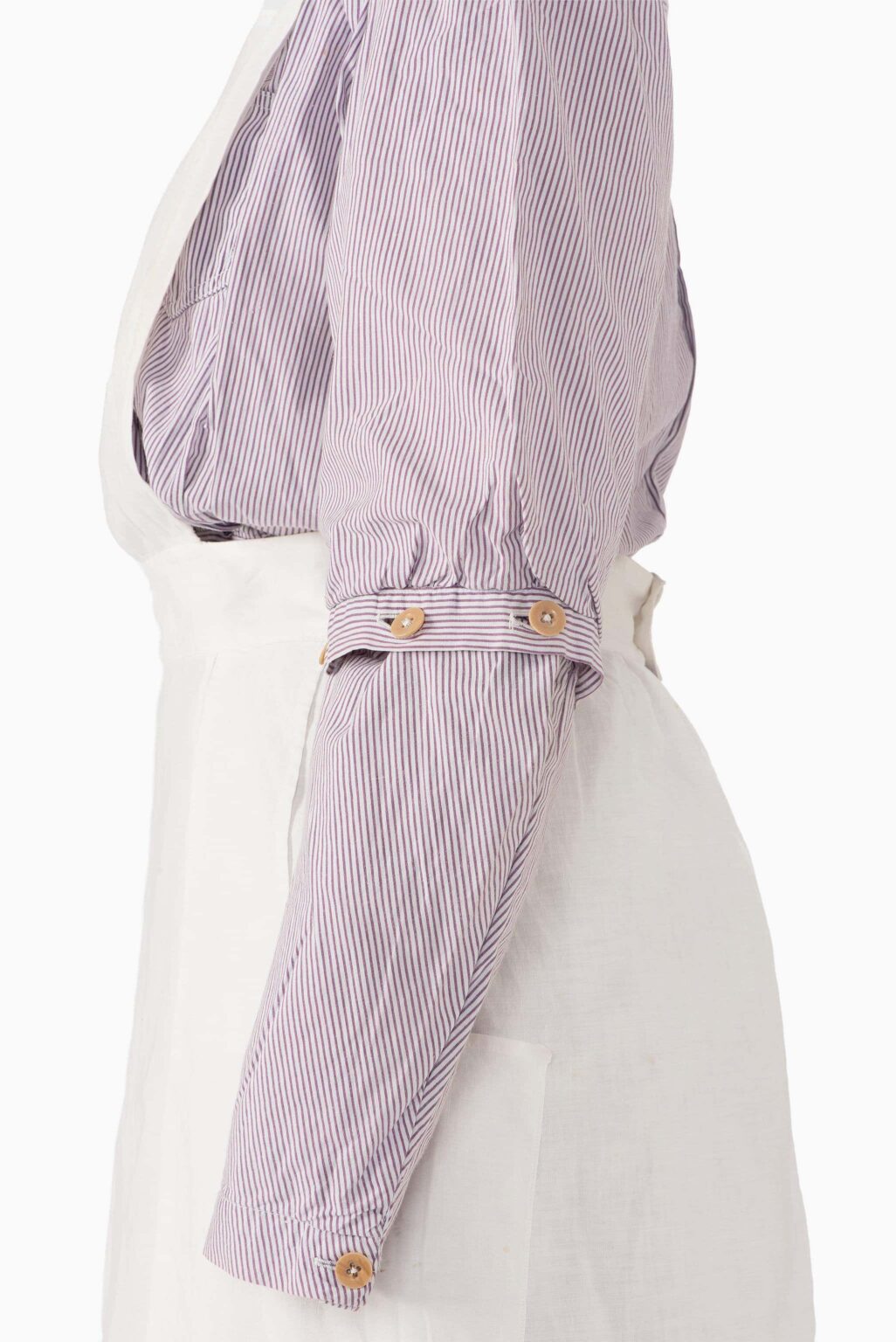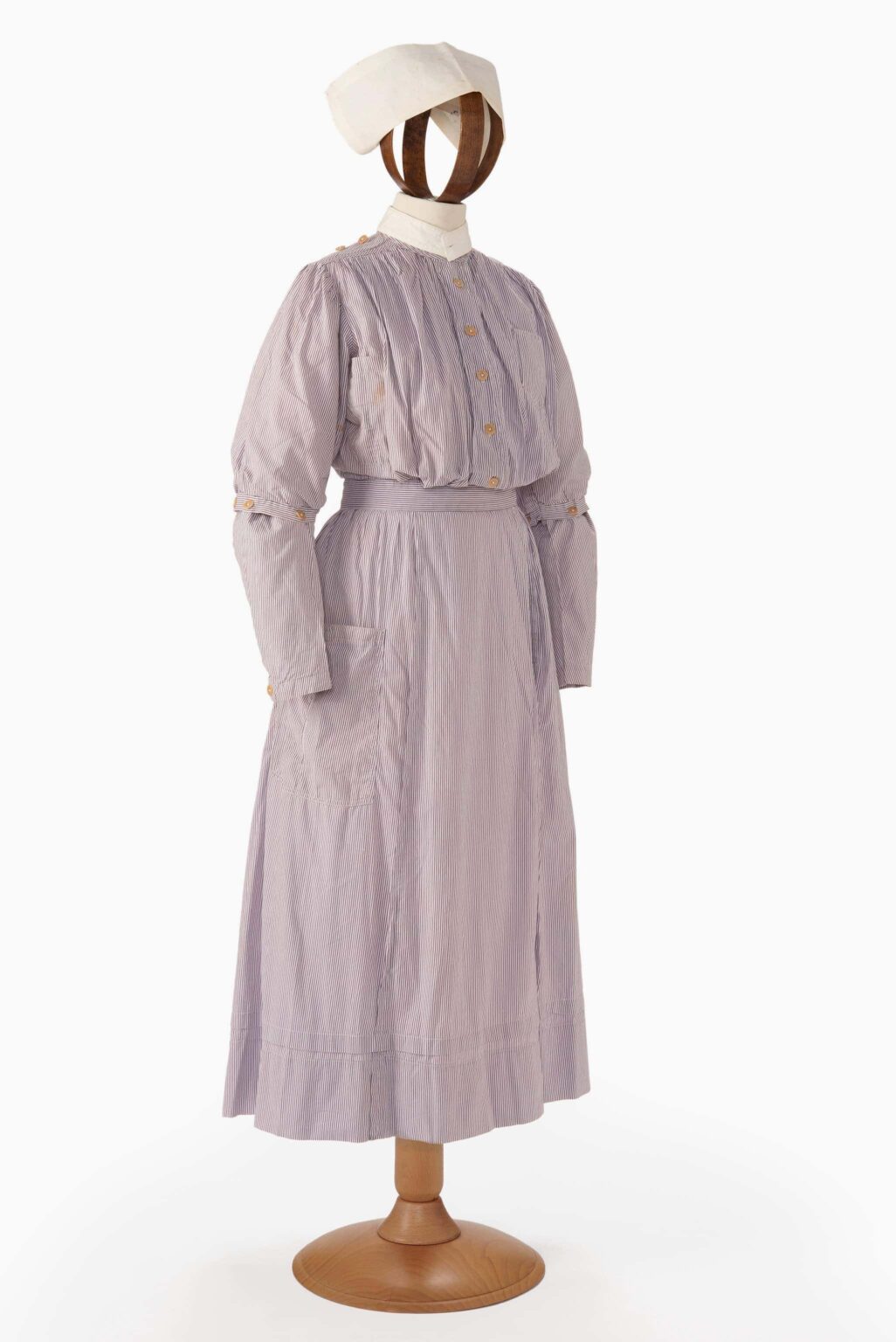
Uniform 1914-1918
Red Cross First World War nurse’s uniform consisting of dress, apron, collar and bonnet. The cotton dress has white and violet stripes, 1914-1918, Camilla Colombo Collection.
Details



Historical context
The Sarajevo bombing on the 28th of June sparked the First World War and the following month Austria declared war on Serbia. Germany sided with Austria while Russia, Britain and France, bound by the Triple Entente, united forces with Serbia, as did Italy in 1915. The golden age of the Belle Époque was a faint memory. The new means of communication mobilised the
populations through effective propaganda. Embracing the ideals of freedom and revenge, as well as strong feelings of nationalism, the conflict spread worldwide. Innovative technologies and war strategies transformed violent trench warfare into human carnage. Futurism, one of the many avant-garde movements of the period, declared itself interventionist and proclaimed war as the “hygiene of the world” in complete contrast to the pacifist vision of the Dadaists. The year 1917 was a crucial turning point in the conflict: in Russia Tsarism ended and the country saw the rise of the Bolshevik Party while the
United States entered the war against the Germans. Italy, led by General Diaz, succeeded in stopping the Austro-German advance. At the close of the conflict in 1918, the number of casualties was extremely high and the sudden spread of Spanish Flu aggravated the already tragic situation.
Fashion
The war also brought about a radical change in clothing. The men were called to arms and left for the front and the women, from all walks of life, faced a new reality. Abandoning frivolity and multiple layers of underwear, dresses became simpler and hemlines rose to ankle-length. The suit became iconic and took on elements of rigour and austerity that were influenced by menswear and military uniforms. Busy with their new roles in life, such as working in the newly organised munitions factories catering to the demands of war, women needed comfortable and functional work clothes that allowed freedom of movement.
Once only associated with housework, the apron became a symbol of women at work. Their new occupations and the desire to be taken seriously, led to the emergence of female uniforms. Women discovered economic independence and an awareness of their new status which aroused male concern as men feared the loss of femininity and their power of control. Women felt a strong duty to their country and undertook voluntary work. Many middle-class and aristocratic women became voluntary nurses and joined the Red Cross. The Red Cross nurse, seen as both an angelic and earthly figure, became the true protagonist of the collective imagination of war.
Technical info
Women
Nurses, volunteers and the Red Cross
During the Crimean War in 1854, Florence Nightingale, a young English woman from a wealthy background, placed herself at the disposal of the British Ministry of War in order to help alleviate the shortcomings of the military health system. Fighting preconceptions and discrimination, she became a paragon of discipline and organisation and introduced the concept of modern nursing. A few years later, Geneva-born Jean Henry Dunant's appeal to humanity shook the nations. The pages of his diary, “Un souvenir du Solférin” recount the atrocious sight of thousands of men lying lifeless and torn apart in the aftermath of the Battle of Solferino and San Martino, fought on 24 June 1859 between the French-Piedmont and Austrian armies. The Geneva Convention of 1863 led to the founding of the Red Cross, and the following year the first treaty sanctioned medical neutrality -the protections of medical personnel and facilities in times of war. The image of the Red Cross nurse
portrayed as an earthly figure and merciful angel appeared in many propaganda prints and illustrations. Numerous women responded to the call by joining different corps in roles that were not purely medical. Although differing from country to country, their nurses uniform was a practical and functional ankle-length dress, often in white, grey, blue or blue and white
striped cotton and an apron pinned to the chest with easy-to-use pockets. The head was covered with a starched veil or white cap. The undisputed symbol of the Red Cross was the red Helvetic cross sewn on the chest or on the armband. Women from all over the world distinguished themselves by the dedication and courage they showed on the battlefield, many of whom lost
their lives.